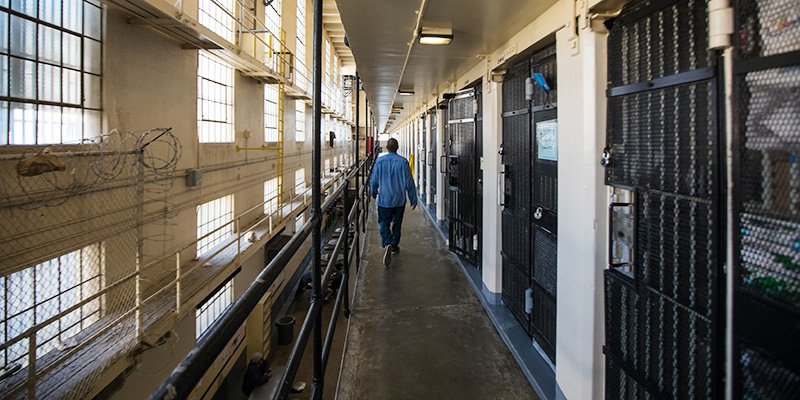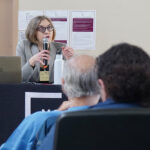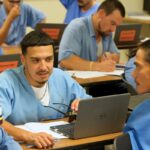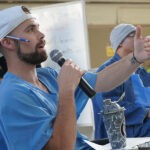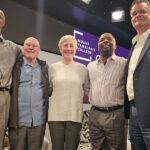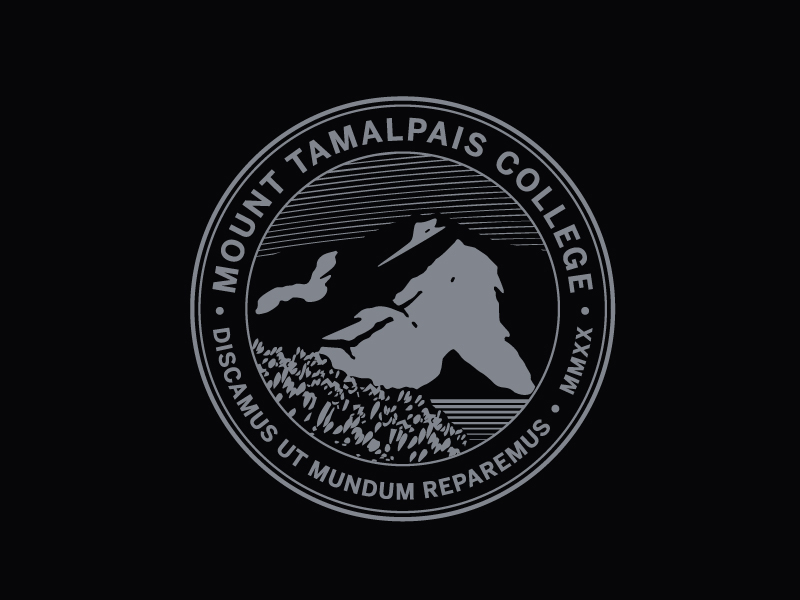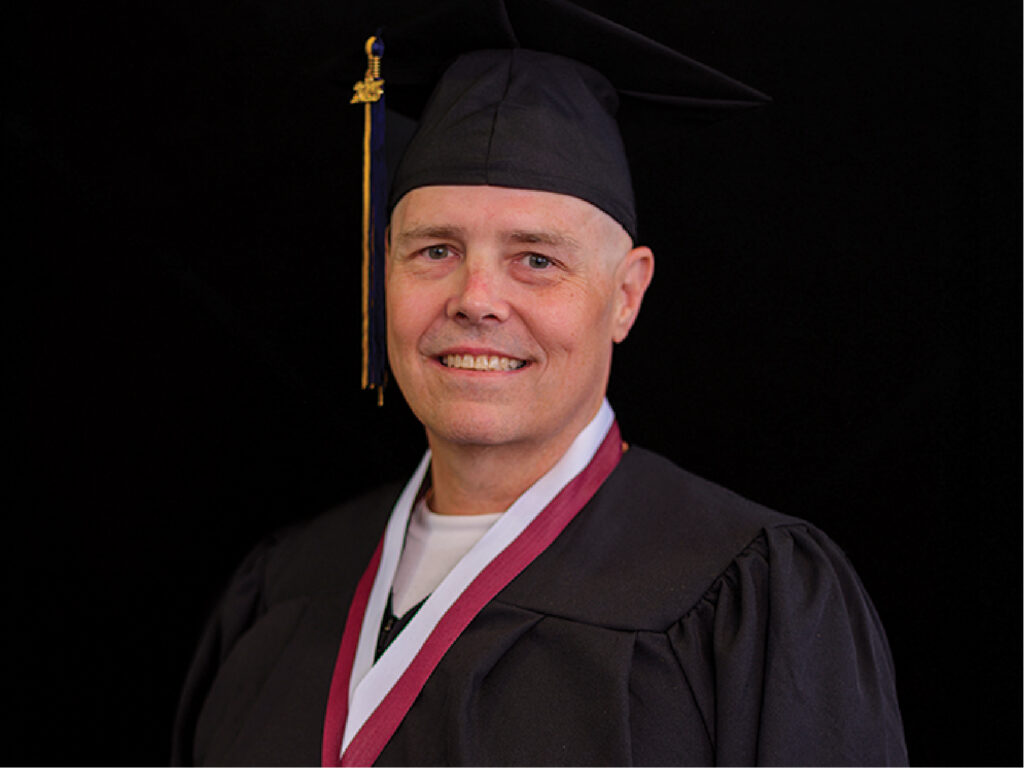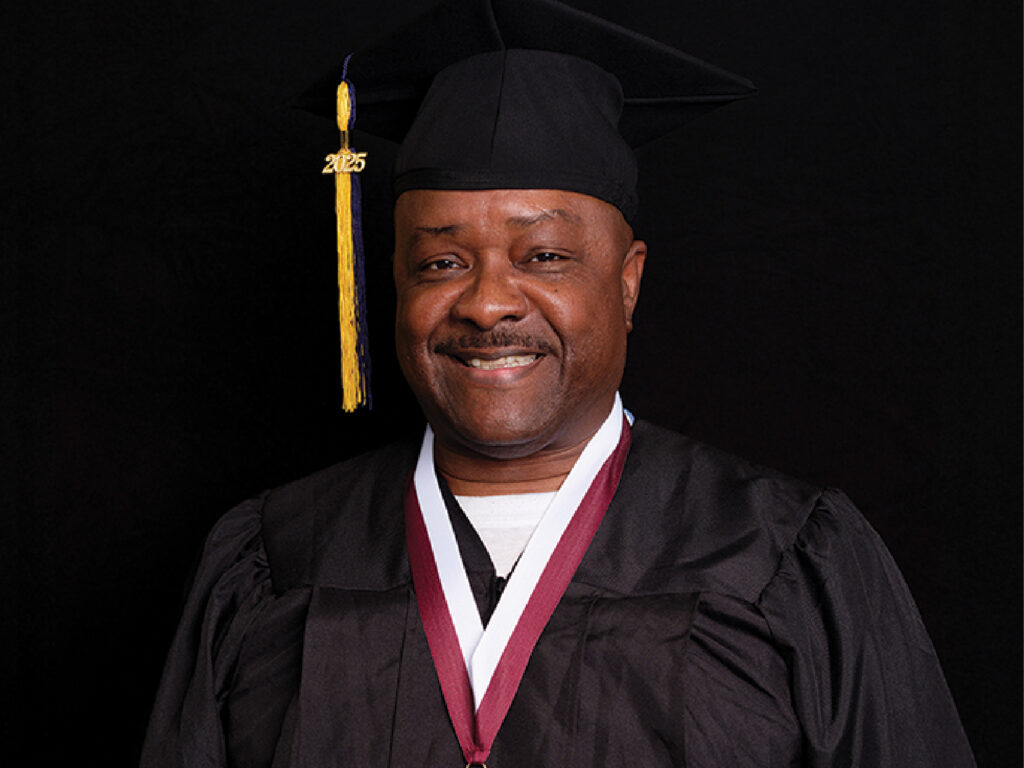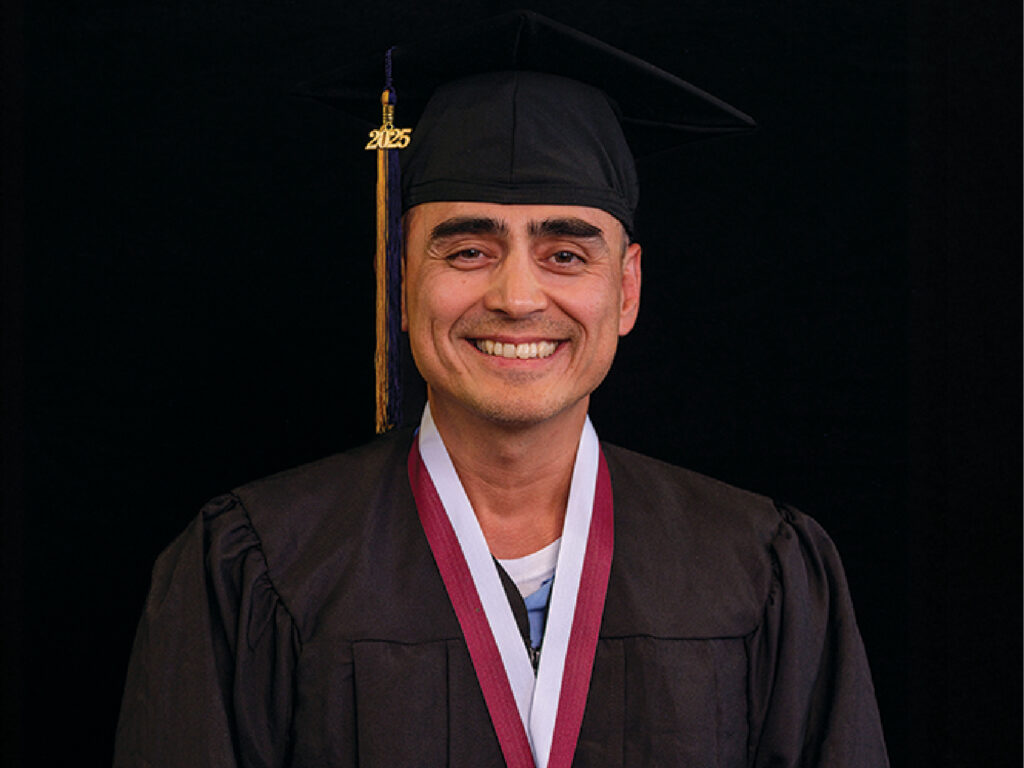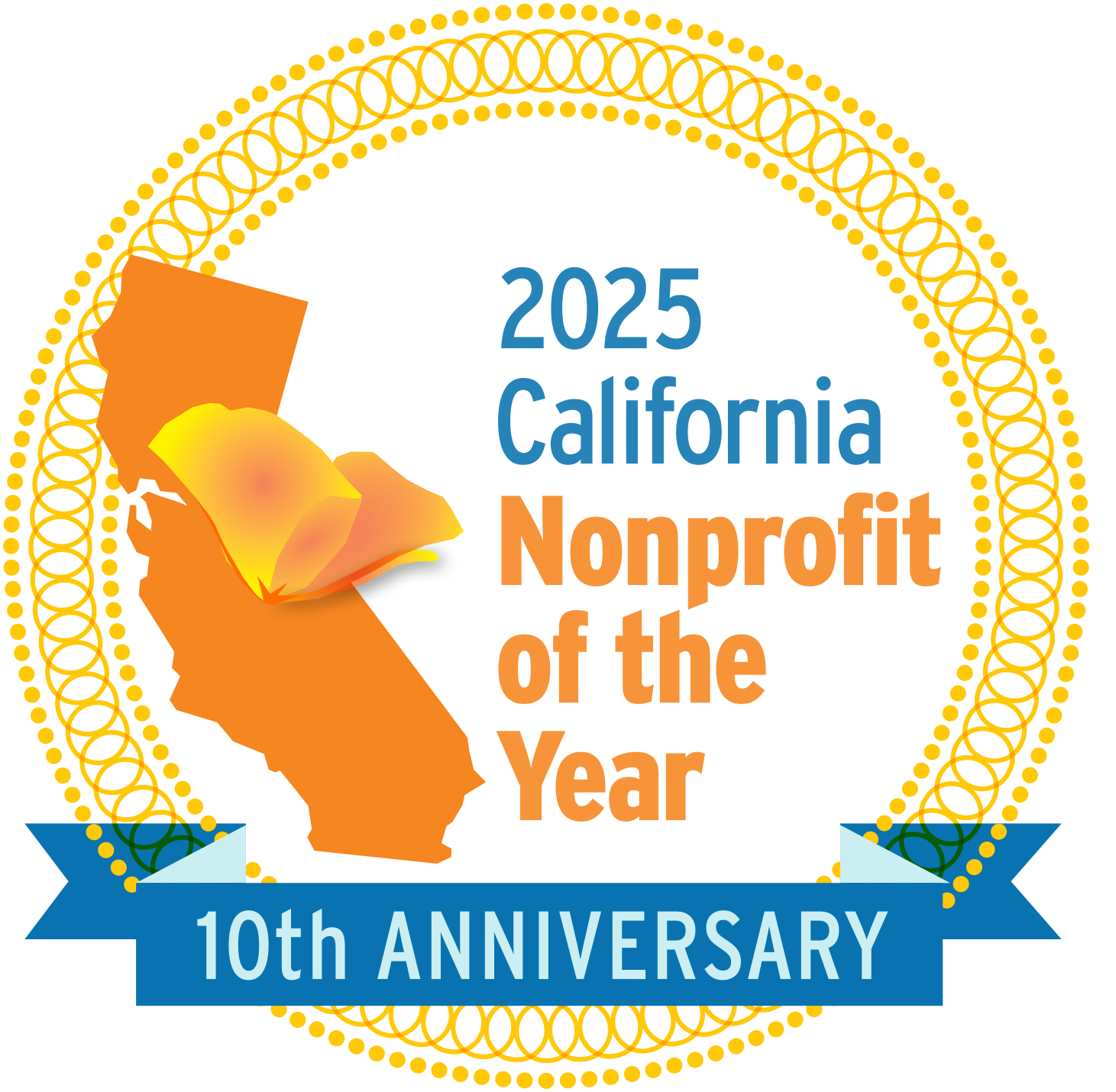Probably in the beginning of March, maybe the end of February, we started hearing about the virus. It was in the news. There was a lot of speculation about how it was going to affect life in general. I remember back at that time things were relatively normal within the prison. I’m part of a team of video journalists that produce a show that’s televised in all 36 prisons in California. And so at that time, we were developing some content that talked about the coronavirus, and also, at the same time, we were interviewing people in the prison and kind of getting their perspectives on what people were feeling and what they felt was coming.
And then on March 17, the prison went on a quarantine lockdown, and I was moved to this part of the prison, H Unit, which is made up of dorms. I was up in the cells before, in North Block. This part of the prison still hasn’t experienced an outbreak, which is pretty amazing since more than 1,000 people in the prison right now have been confirmed to have the virus. I feel blessed that I’m able to talk on the phone and just be healthy right now.
Back then, they were moving people around the prison and, I think, trying to make sure that certain vulnerable populations were in places where they were able to social distance. But we’ve realized over the past few months that, actually, those measures didn’t work, because the prison is vastly overcrowded. There’s no way to social distance. There’s no way to isolate people. It’s been a catastrophe.
Since March we’ve been locked out of the media center, which is where we all work—the podcast Ear Hustle is there, the newspaper is there—so that’s kind of the center of information that comes out of the prison in the world. I’ve been isolated from the other journalists I work with. I’ve been trying to receive messages from them through people that we know, people whom we have contact with in common.
I still have friends in North Block. North Block is a huge cell block. Everyone is double-celled in a really small cell, which is like 5-by-10 feet. There’s no proper ventilation. There’s no air coming into the cell block. Everybody’s kind of breathing the same air. And so the stories that I’ve heard, which I think are to be expected, are that people can’t breathe and that people are collapsing and falling left and right. That’s really scary. I know a lot of people in vulnerable populations—older people, people with preexisting health conditions—who are up there whom I care about. I’m really concerned about them.
In other parts of the prison, they’re not having access to the phone in a way that we are here, because we’re in the dorm—it’s open space and the phones are accessible. Up in the cell blocks, the phones are outside of the cells. So if you’re locked in a cell, you can’t use the phone. So it’s harder to get information from up there. There are some people I know who have the virus and are asymptomatic. But I also heard somebody I know, who was a subject of a film that I made, is in the ICU right now. I don’t know much about his condition.
I noticed that the California Department of Corrections and Rehabilitation’s statements to the media have put out there that they’ve been providing hand sanitizer and masks, which is, to a certain degree, true. We did get masks I think about a month into the quarantine lockdown. Where I am, there’s one hand sanitizer dispenser in a building of 100 people, and it hasn’t always been readily available. But I think the whole idea of talking about hand sanitizer is not really the point. Like, the virus is already here. There are outbreaks already. I’m not sure if hand sanitizer is going to stop an outbreak here. It’s really, really overcrowded. This is a public health emergency.
Overcrowding has been an issue for decades. Even in the years before the pandemic, the Supreme Court ruled that the conditions in Southern California prisons were unconstitutional and ordered the state to relieve the overcrowding problem because people were dying because of lack of medical care and lack of mental health care. And this was in the years before the pandemic. Now, here we are, in the heat of it, and we’re still not getting any answers about when the overcrowding will be relieved. There are people in the community who have stepped up recently and said that they will aid in the reentry of people coming out of prison. There are numerous family members who are willing to take people back into their homes. So there are places for people to go, and people who are willing to accept them. Our No. 1 demand is that people are allowed to leave this place. I think the No. 2 demand is that CDCR stop transferring people around the state and spreading the virus to other prisons.
I think a lot of what I was doing, even beyond journalism work, was just working on building community here. I mean, this is a community. There’s a big creative arts community here. People are involved in theater and in writing and graphic arts; other people are involved in education and teaching; there’s a college program here, a music program, and, above all of that, a lot of people here who are interested in self-development and trying to find out solutions to violence and investigating their childhood and things like that. Those things have been interrupted right now. So I worry about people whom society had labeled as violent or wrong and who were actively working to take on new identities and new ways of being. And that’s being interrupted now. I worry about that. And I worry about that for myself too. I think that those community bonds that I share with other people are really important. I’m not able to see those people. I don’t know what’s going on with those people.
I’m trying to stay as healthy as possible and trying to stay as clean as possible. I’m trying to wear my mask. But other than that, I’m not really sure what I can do to prevent the coronavirus from getting in here. There is quite a bit of distance between H Unit and the cell blocks in the other parts of the prison, so I think that’s one of the reasons it hasn’t hit here yet. But there are correctional officers who are working shifts up in the affected areas and then coming down here. There is more ventilation here, and as you know, that is one of the best ways to combat the virus. We have windows here, and there’s a door that stays open. But this dorm is overcrowded too. If it was to get in here, there isn’t a lot of social distancing here. We all use the same restrooms; we use the same showers. Our sleeping areas are really close together—like, inches away from each other. So this area is problematic too. And in some ways, it feels like we’re just waiting until the virus hits here. That’s what it feels like. It feels like we’re just sitting here waiting.
Attribution: This article originally appeared in Slate on July 6, 2020.
Read Story
